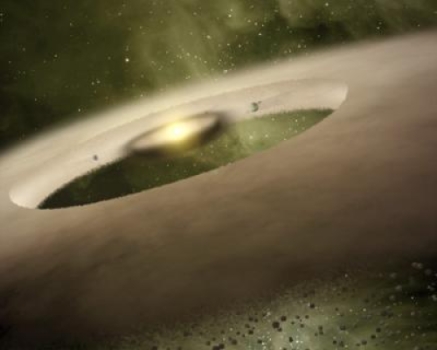Youngest Solar Systems Detected
When I first started graduate school in 1991, only the planets in our solar system were known. By the time I finished almost six years later, astronomers had found over a dozen planets beyond the solar system. They dubbed these new planets exoplanets. As of September 24, 2008, 313 exoplanets have been detected, including 268 planetary systems and 32 systems with multiple planets.
Astronomers used a number of different techniques to detect the exoplanets. They continually work to develop new techniques and make old techniques more sensitive. Though this is a difficult task, comprehending how planets form and change over time promises to greatly impact our understanding of our place in the cosmos. Work by astronomers at the University of Michigan provides another tool, working from a slightly different approach, in this endeavor.
The first phase of star-planet formation occurs when a gas cloud begins to collapse. As it collapses, a large disk of material forms around the protostar. This disk provides the materials for any potential planets. If planets begin to form, they will sweep up the material, creating a gap in the disk (as shown below).

The University of Michigan team detected gaps around two stars that are roughly one million years into the star-planet formation process. Previous gaps in disks had been seen. Since these gaps reached all the way to the central star, two different models could account for them. Either planet formation caused the gaps (as described above) or the star was photoevaporating the disk. In this more recent work the disk near the central star remains which rules out the photoevaporation model. Only the planet model can account for the gaps.
These observations complement exoplanet discoveries by permitting astronomers to study the processes that lead to planet formation. Reasons To Believe argues that much astronomical evidence points to a Creator fashioning the universe. As scientists understanding of the universe increases, the design evidence increases as well. Since humans must live on a planet, we expect a flood of evidence for design to flow in as scientists better comprehend the process of planetary system formation.





